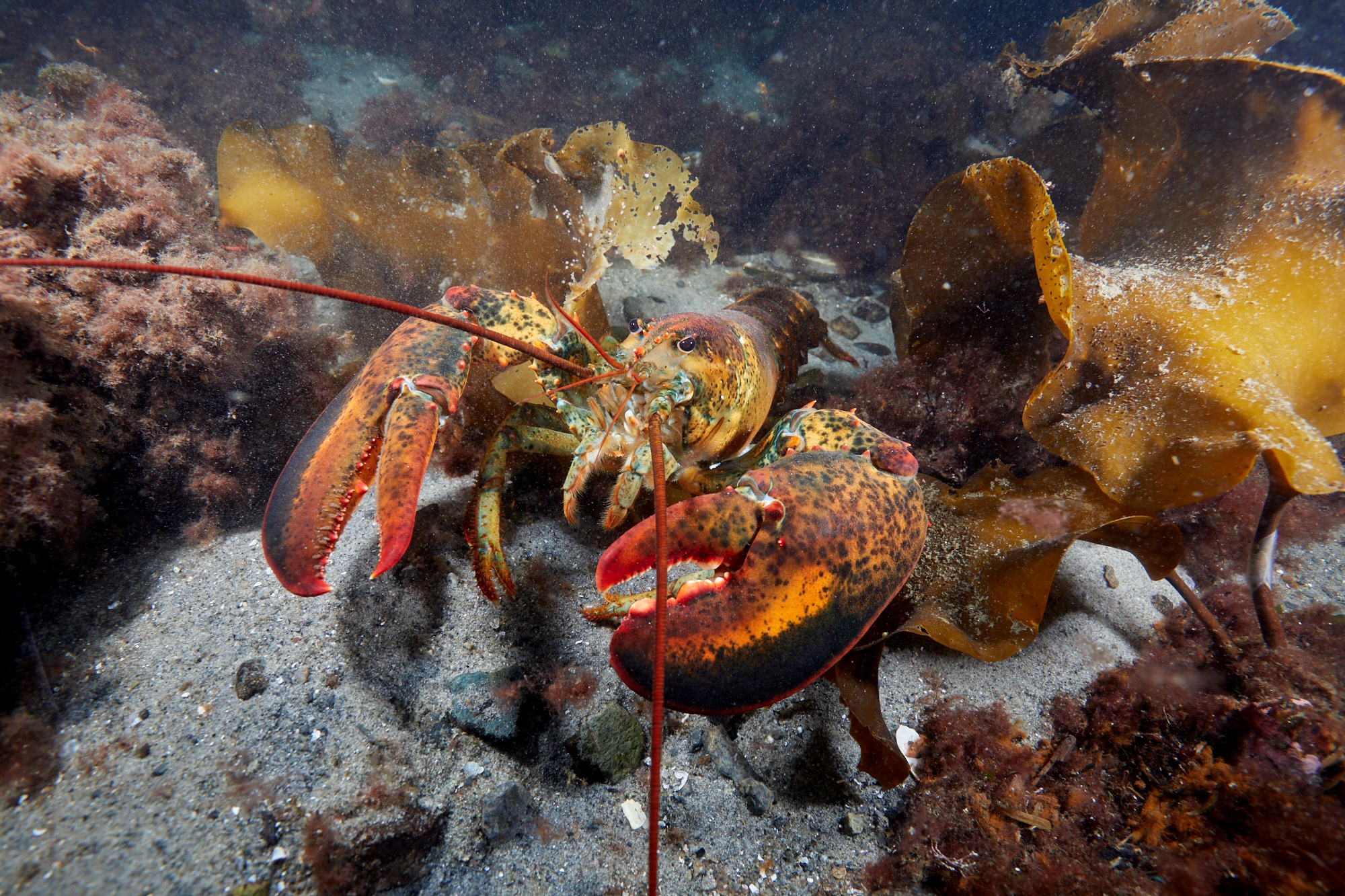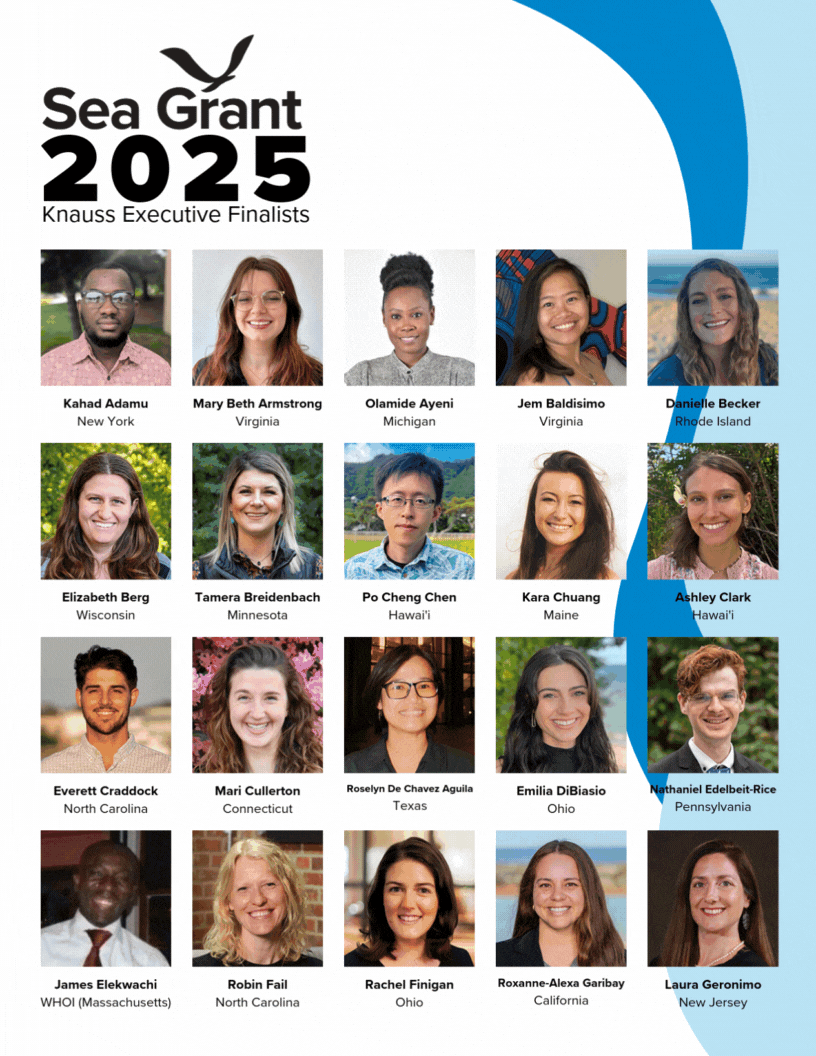By: Clea Harrelson,
Knauss Fellow,
Ocean Science Policy Fellow,
National Science Foundation
“Who is that?” was a constant refrain in my head for the first few months of my Knauss fellowship. The feeling of being overwhelmed that comes with the beginning of any new job is often described as a “crush”, but for me, it was more accurately a sensation of being untethered, floating in interagency space. Who are all these people, what do they do, and how do they relate to my work?
As part of my core duties as a Fellow at the National Science Foundation (NSF), I work to support the Subcommittee on Ocean Science and Technology (SOST), the lead interagency entity for federal coordination on ocean science and technology. The SOST oversees multiple interagency working groups and is engaged in a wide range of long-term efforts on topics such as coastal resilience and the United Nations Ocean Decade for Sustainable Development. Above all, the SOST is a platform that enables representatives from federal agencies with a stake in the ocean to come together and create policy that meets the nation’s needs.
Good ocean science requires good ocean science policy. It requires an appreciation for people, values, and all the messy, subjective pieces of life that scientists often seek to minimize in their work. Simply put, science policy is how society expresses its needs to the scientific community and vice versa. Although policy and science go hand in hand, policy is often a murky twilight zone from which reports and guidance suddenly appear, and many scientists view themselves as far removed from the policy-making process. As an additional layer of complication, science policy involves a web of interagency relationships through which information is shared, and tradeoffs are negotiated.
The allure of understanding the complexities of the policy-making process and interagency communication is what drew me to my position at NSF. Some people might argue that NSF is focused on basic research rather than science policy, but policy does not need a formal directorate to exist. Policy happens through quarterly interagency meetings, memorandums of understanding, side phone calls and quick emails to colleagues across the government. Any agency that advocates for funding and shapes the direction of future research and science application is engaged in science policy. And I was excited for all of it, confident that my interdisciplinary background and coursework in federal ocean policy would prepare me for my fellowship year. However, even a healthy appreciation for the importance of people and interagency relationships in science policy did not fully prepare me for this position.
The sheer number of people involved in the interagency landscape of science policy is challenging enough, but as I began to find footholds in names and faces, I realized that despite the large number of people involved and time dedicated to coordinating science policy, there is a perennial call for “enhanced federal coordination” related to ocean science (and thus science policy). It’s written into work plans, offered as a solution in meetings, and often mistaken for increased communication. As I continued observing and learning from colleagues and interagency teams through my day-to-day work, I realized I had been asking the wrong question. Rather than understanding who the people are around me and what they do, I should have been focused on how they do what they do.
At its worst, calls for enhanced federal coordination can lead to meetings that should have been emails, hollow posturing, and little change in the status quo. However, at its best, coordination across federal ocean agencies can ensure resources are used efficiently, speed up the translation of knowledge to action, and fundamentally transform the outcomes of science.
One clear example of successful coordination is the SOST Coastal Resilience Workshop (June 15, 2021). This event stands out not because of the number of reports that will be produced or the size of the audience in attendance but because of the longevity of engagement with coastal resilience practitioners. Months of diligent planning by a team of interagency experts resulted in the vision for a workshop rooted in collaboration. The workshop team I support additionally held a total of five Office Hours designed to gather information and better address community needs in preparation for the workshop itself. Before the workshop has even taken place, agency representatives from across the spectrum of coastal resilience science users and science producers have initiated conversations and catalyzed interagency relationships that have the potential to change the way coastal resilience is addressed at the federal level for decades to come. The process of successful coordination begins with how people do what they do, and this starts long before the first official meeting or interaction. By watching interagency veterans navigate the ocean policy space and plan for the SOST Coastal Resilience Workshop, I’ve come to understand that the most important yet undervalued aspect of policy coordination is preparation.
Thorough preparation is not glamorous or shiny. It’s not the adventurous image of someone in azure blue water diving with sharks that might come to mind when the average person imagines ocean science. In reality, thoughtful consideration of what type of relationship one agency needs with another, how to ask for and offer support across agencies, and how to ensure the right information gets to the right people is the foundation for ocean science policy, and thus, ocean science. Understanding the importance of preparation isn’t so much a tether as it is a tool that allows me to see the web of interconnecting lines that existed all along. As I continue to float around in interagency policy space, I’m quickly learning how to plot a course and use preparation to propel me forward.


